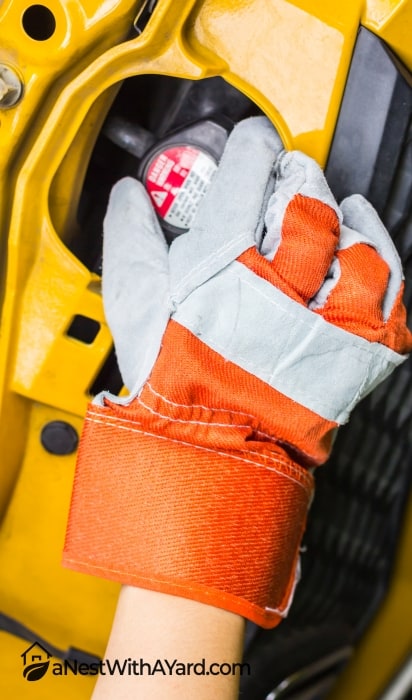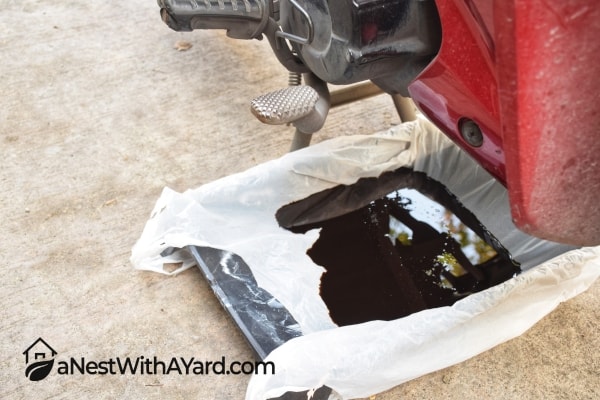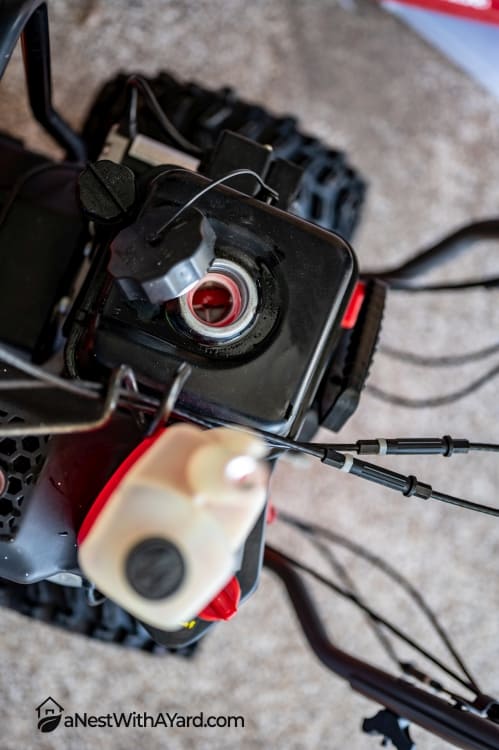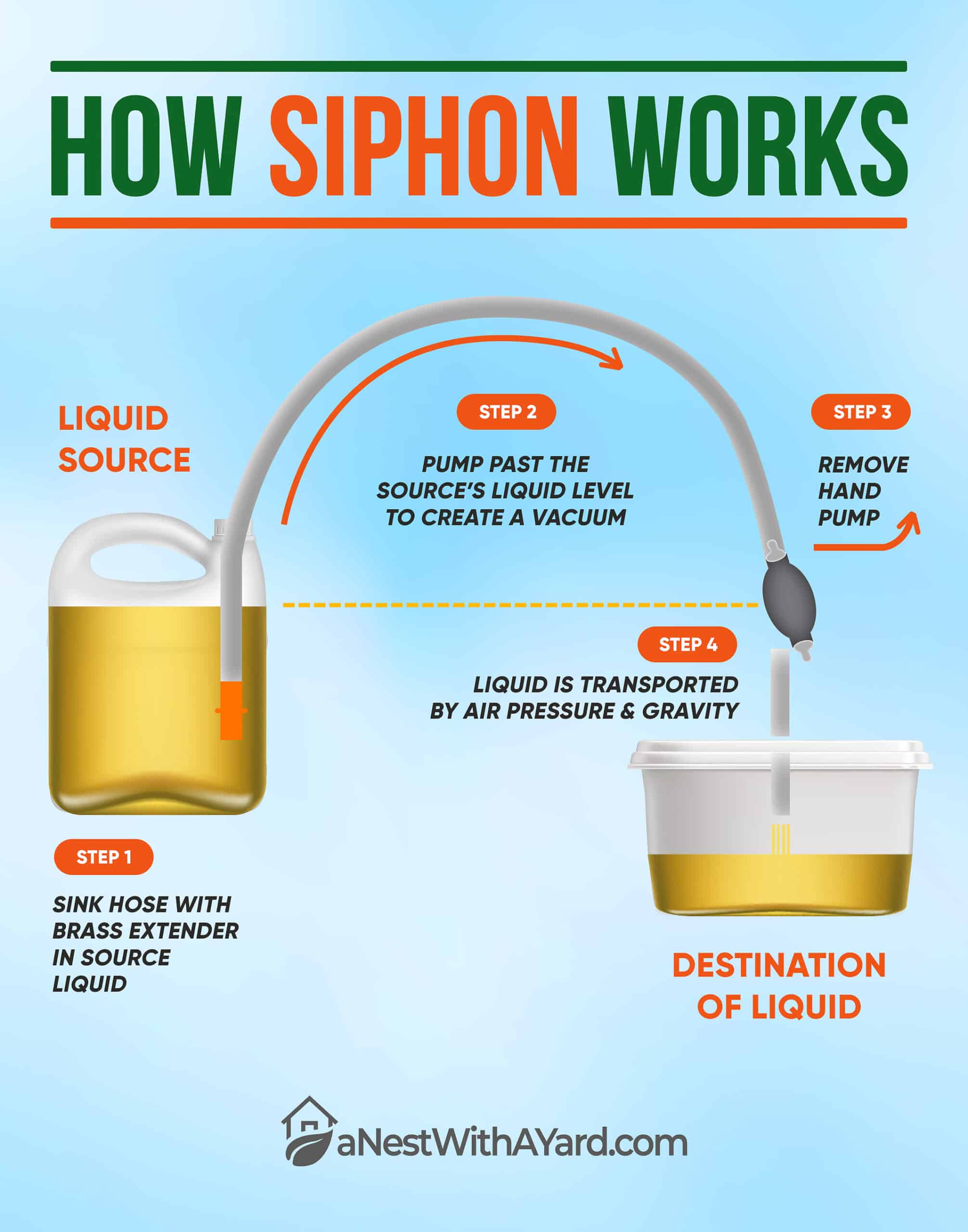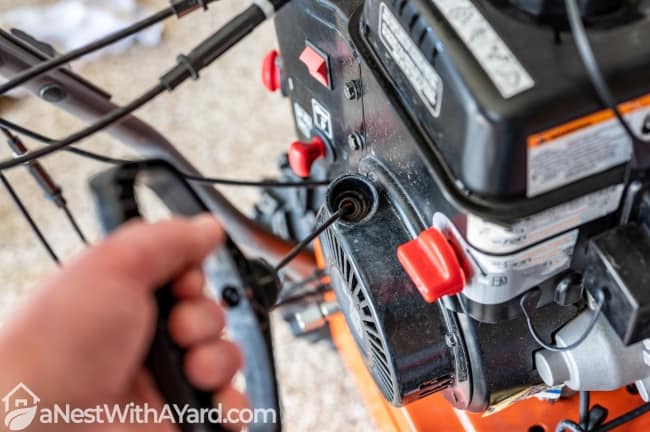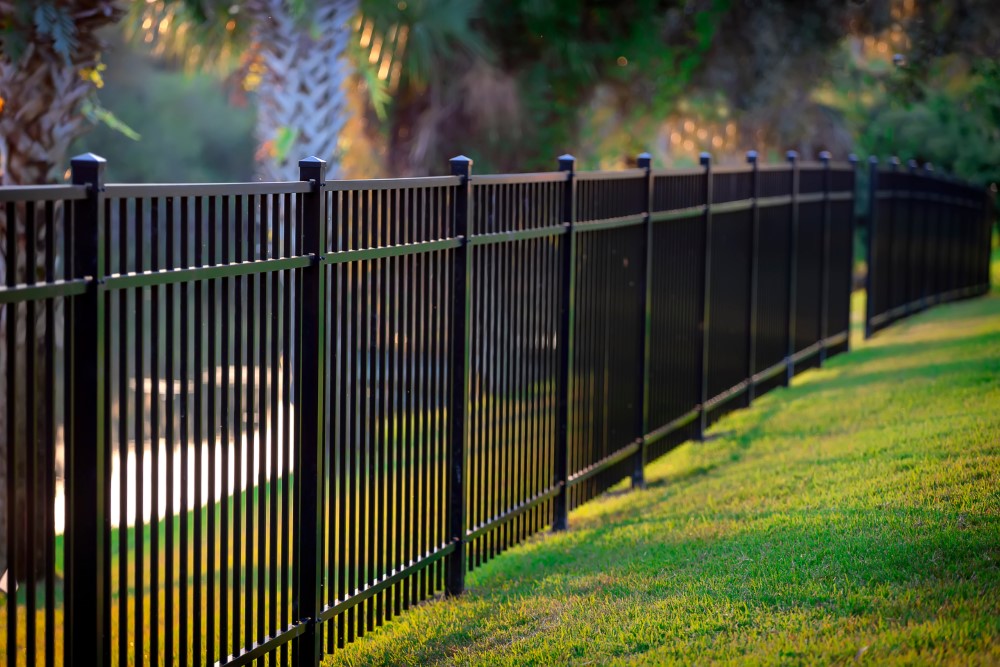How To Drain Gas From Snowblower In 2022

Here’s how you drain gas from a snowblower:
- Put on gloves, earplugs, and safety goggles.
- Let the engine cool off if it has been running.
- Set up the drain pan or gas-safe container.
- Open the fuel tank.
- Siphon as much old fuel from the tank to the drain pan.
- Fire up the engine and run it dry.
How amazing does this snowblower look despite its old age? It’s still working smoothly because its owner didn’t skip on off-season gas draining.
If you, too, want your snow blower to last you your whole life, follow my easy tutorial on how to drain gas from a snowblower.
I like to drain my gas tank at the end of the winter when I am about to put the snow blower in storage. This simple and quick maintenance step has kept my trusty machine out of the repair shops.
With prices skyrocketing everywhere, wouldn’t we all like to lower our yearly home maintenance expenses? That’s exactly why I wanted to share my easy step-by-step guide with you! So you, too, can save a buck!
How To Drain Gas From Snowblower With Siphon Pump
What You Will Need
- Siphon pump
- Drain pan or gas container
- Work gloves
- Safety goggles
- Ear plugs or ear muffs
- Sturdy boots
- Tight fitting clothes
Steps
Here’s how to drain gas from snowblower with a siphon pump.
- Pick A Safe Space For Draining Gas
The first thing you need to do is decide where you want to siphon the gas. You surely don’t want to change your gas near a heating unit or an open flame. We all know that gasoline and fire don’t go together!
Don’t do it in your garage either! Running a snow blower in an enclosed space can expose you to carbon monoxide.
Pick a flat-level service that is out in the open. From my personal experience, it is better to do it on a lawn or gravel to avoid staining and damaging your driveway.
- Protect Yourself
Make sure you protect yourself whenever operating or working on a snowblower. This includes wearing work gloves, earplugs, and safety goggles. I also recommend you avoid wearing loose-fitting clothes that can get caught up in the auger and pull you in towards the blower.
Before you start draining the fuel, make sure the snow blower is turned off. If you have just used your blower, I recommend letting the engine cool off for about half an hour, so you don’t burn yourself.
- Set Up A Drain Pan
The next thing you need to do is set the drain pan on the ground close to the tank. It is important that the pan lays lower than the gas tank to allow the force of gravity to pull the liquid through the siphon.
- Open The Fuel Tank
Locate the fuel cap on the snowblower where the gasoline goes in. Remove it and place it in a safe place, so you don’t lose it.
- Use Siphon Pump
If you have never used a siphon pump before, you will first have to familiarize yourself with this ingenious device. Luckily, it is easy to use, so you don’t have to worry like I did the first time using it.
A siphon pump is basically made of two tubes that are connected together with a small manual pump. To use it, you need to place one tube end in the gas tank and the other end in the drain pan. Squeeze or pull on the pump that’s in the middle to create suction. You will see gasoline slowly coming through the tube. Let the fuel drain out of the tank completely.
For the best results, I recommend you keep the end of the tube at the very bottom of the fuel tank to get as much gasoline out as possible.
If you are still confused about how your siphon pump works, read the owner’s manual that came with the product, or watch the videos I have picked for you.
- Run The Engine Dry
When there is no more gas coming out of the siphon, you can carefully remove it and set it aside for the next use.
Don’t pack up your snowblower just yet! There is still some gas left in the fuel system!
Put the tank cap back on a snowblower and start the engine. Let the machine run until it burns all of the residual fuel in the system. Some people skip this last step, thinking that the siphon pump alone has removed all the gas. That is not the case.
Ethanol fuel sold at every and any gas station today becomes a highly corrosive substance when it binds with moisture. Leaving even a small amount of fuel sitting in the system will lead to irreversible damage unless you use the fuel stabilizer Star Tron or Sta-Bil before winterizing your snowblower.
These Videos Can Help You Out
Using a siphon pump may look complicated, but it is quite the opposite. Don’t believe it? Watch this video to see for yourself!
If you don’t quite understand my step-by-step tutorial, you can watch this video instead. It shows you exactly how to drain gas from your snowblower.
FAQs
Should you drain gas from snowblower?
You should drain gas from snowblower at the end of every snowblowing season unless you add fuel stabilizer to it. If you leave the untreated ethanol gas sitting in the tank, off-season, it can lead to corrosion, clogging, and starting problems.
Do snowblowers start with old gas?
Snowblowers can start with old gas. But don’t be surprised if your machine doesn’t start after sitting. This is a more likely outcome. You can fix your machine by draining all the gas and cleaning the carburetor.
Is it better to drain gas or use stabilizer?
It is better to use a stabilizer than to drain the gas. It is difficult to completely dry out the fuel system. Leftover gas inside the chambers can easily evaporate and turn into sticky varnish. Moist air can also fill the empty tank and fuel line and cause rusting.
Can you mix old gas with new gas in a snowblower?
You can’t mix old gas with new in a snowblower. Old fuel doesn’t have the same combustibility as fresh fuel. If you mix the two together, you may run into a starting problem or decreased engine performance.
How long does it take gas to go bad?
It takes 3 to 6 months for gas to go bad. Organic-based ethanol can degrade within 1 to 3 months, while diesel stays fresh for up to a year. Stabilized fuel can last up to 24 months, according to the manufacturers.
Confidence Is The Key
I told you! It is easy to drain gas from a snowblower! I admit I was a bit nervous doing it the first time. But now I am confident enough to change the spark plug, change the motor oil, and do other seasonal tune-ups.
With the help of my guide, you can gain confidence, as well! Don’t you agree? Let me know in the comments below, and feel free to share this tutorial with others!

